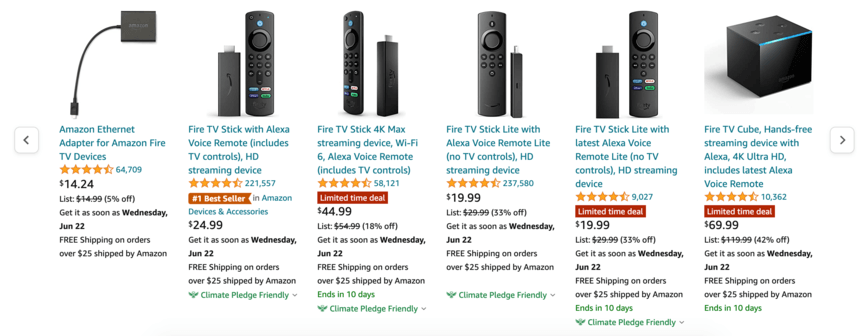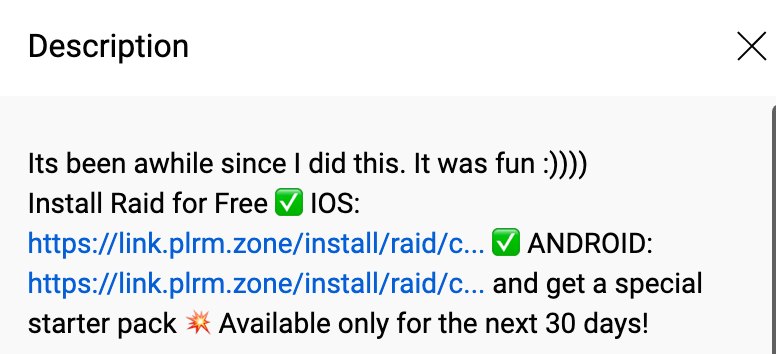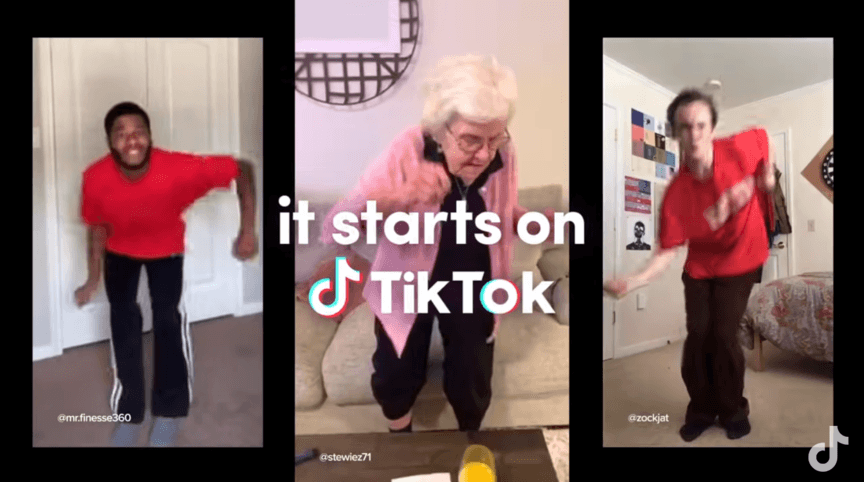-
 6 min. read
6 min. read
-
 Matthew Gibbons
Matthew Gibbons Senior Data & Tech Writer
Senior Data & Tech Writer
- Matthew is a marketing expert focusing on the SEO & martech spaces. He has written over 500 marketing guides and video scripts for the WebFX YouTube channel. When he’s not striving to put out some fresh blog posts and articles, he’s usually fueling his Tolkien obsession or working on miscellaneous creative projects.
John is browsing YouTube when he sees an ad for a new line of razors. He’s curious, so he stops by their website to read some of their content, and later receives an email from them. In the span of thirty minutes, John encountered marketing from the razor company via three different channels.
As you might imagine, this multichannel marketing approach has the potential to impact John more than isolated campaigns, making it a great option for your business. In particular, omnichannel marketing is a fantastic strategy to pursue.
But what is omnichannel marketing, and what does it look like in practice? Below, we’ll give a brief definition and then look at some omnichannel marketing examples, so keep reading to learn more.
Then subscribe to Revenue Weekly, our email newsletter, to have more digital marketing tips delivered straight to your inbox!
What is omnichannel marketing?
Omnichannel marketing is a form of marketing that encompasses using multiple marketing channels to promote your business and create a cohesive experience.
A marketing channel is a specific form of media that you can use to market your business — for instance, email, video ads, and social media are all different marketing channels. So, omnichannel campaigns encompass several of these channels at once.
It’s worth noting that omnichannel marketing is slightly different from multichannel marketing. Multichannel marketing is where you market your business using multiple channels, but those channels aren’t connected. So, your email campaign would have no relation to your social campaign.
With omnichannel marketing, though, there’s a distinct connection between all your channels. You’re not running a separate campaign for each one — you’re running a single campaign that encompasses multiple channels.
Bonus Read: Omnichannel vs. Multichannel Marketing
How to create an omnichannel campaign
Before we get into any examples of omnichannel marketing efforts, let’s take a moment to talk about how you can get started with your omnichannel campaign.
1. Assess your audience
The first thing you’ll want to do is assess which channels are the most advantageous for you. You can do that by running separate campaigns on different channels and determining which ones are the most effective.
You can also assess your audience demographics to see which channels they favor.
2. Craft your campaign
Next, you can take your findings and begin crafting a campaign that spans multiple channels — specifically, whichever channels you determined were the best for your company.
Don’t make your marketing look radically different on each channel, either. Maintain the same theme and core message across all your channels so it’s recognizable as a single campaign.
3. Create links
Finally, do your best to establish connections between the different channels. Arrange your campaign so that one channel will lead users to another, and then that channel will lead users to still another platform. That will keep them engaging with you even as they jump between channels.
4 omnichannel marketing examples
Now that we’ve covered the basics of getting started with your company omnichannel marketing efforts, let’s look at some examples of other companies that have used omnichannel campaigns to see what it can look like in practice.
1. Amazon
If you’ve ever used Amazon before, you’ve undoubtedly encountered their marketing. Amazon invests time in advertising across numerous channels.
To start with, Amazon advertises directly on their website, showing recommendations for products as people browse.

They also like to send emails to users who purchased from them, usually recommending similar products to the ones shown in their on-site ads.
On top of that, Amazon runs ads on streaming platforms like Hulu, giving them a wide reach.
2. PNC
PNC Bank is another example of a company that markets across multiple platforms. Much of PNC’s advertising focuses on people who are already members, with the intent of getting those members to sign up for additional services.
PNC harnesses both email and postal mail to reach their members, promoting different programs and rewards through both channels. But much of PNC’s marketing comes through their mobile app.
On this app, members can do many of the same things they could do on PNC’s website or in a physical bank, from transferring money to depositing checks. That flexibility appeals to existing users while also drawing in new members.
Furthermore, PNC sometimes uses the app to send notifications to its members about different services they can use, encouraging them to take the same steps that they advertise in their emails.
3. Raid: Shadow Legends
Unlike the previous two examples, Raid: Shadow Legends may seem like an oddly specific choice for this list. But it’s here because it’s mastered omnichannel marketing using some slightly different channels than other companies.
If you haven’t heard of it before, Raid is a mobile game. It’s fitting, then, that one of its main marketing channels is other mobile apps, where it will often show ads. The idea is that people could be playing one game and then decide to try Raid instead once they see an ad for it there.
An even more common advertising spot for Raid, however, is YouTube. In addition to running regular YouTube video ads, Raid has taken an even more creative approach and sponsored a variety of videos by well-known YouTube personalities — to the point that it’s become something of a joke how frequently it’s been a sponsor.

These niche advertising channels show that Raid knows its audience and knows where to find them.
4. TikTok
There’s no denying that, at this point, TikTok is a cultural behemoth. And that’s likely due in no small part to its proficiency with omnichannel marketing.
Given that TikTok is both a social media platform and a video platform, it makes sense that those are the primary channels it would target. It’s run some ads on other social media sites, but to a large extent, it doesn’t have to — people often post TikTok videos on places like Twitter all on their own.
Meanwhile, TikTok commonly runs video ads on places like YouTube and Hulu. It’s a smart strategy — people on those platforms are already looking to sit back and binge-watch videos, so why not do it on TikTok instead?

Ultimately, all these channels come together to draw people to TikTok, significantly boosting the number of people on the platform.
Our digital marketing campaigns impact the metrics that improve your bottom line.
See Our Approach

$10 billion

24 million

7.14 million
WebFX can drive better results for your company omnichannel marketing
Want some help emulating these examples and getting your omnichannel marketing campaigns off the ground? Just partner with WebFX! We’ve been driving digital marketing results for over 29 years, so we know what it takes to craft a successful campaign.
We offer a wide range of digital marketing services, including:
To get started with us, just call 888-601-5359 or contact us online today!
-
 Matthew is a marketing expert focusing on the SEO & martech spaces. He has written over 500 marketing guides and video scripts for the WebFX YouTube channel. When he’s not striving to put out some fresh blog posts and articles, he’s usually fueling his Tolkien obsession or working on miscellaneous creative projects.
Matthew is a marketing expert focusing on the SEO & martech spaces. He has written over 500 marketing guides and video scripts for the WebFX YouTube channel. When he’s not striving to put out some fresh blog posts and articles, he’s usually fueling his Tolkien obsession or working on miscellaneous creative projects. -

WebFX is a full-service marketing agency with 1,100+ client reviews and a 4.9-star rating on Clutch! Find out how our expert team and revenue-accelerating tech can drive results for you! Learn more
Try our free Marketing Calculator
Craft a tailored online marketing strategy! Utilize our free Internet marketing calculator for a custom plan based on your location, reach, timeframe, and budget.
Plan Your Marketing Budget

Proven Marketing Strategies

Proven Marketing Strategies
Try our free Marketing Calculator
Craft a tailored online marketing strategy! Utilize our free Internet marketing calculator for a custom plan based on your location, reach, timeframe, and budget.
Plan Your Marketing Budget
What to read next





